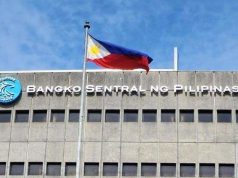
MANILA – Tighter liquidity conditions would likely be an opportune time for the Bangko Sentral ng Pilipinas (BSP) to trim banks’ required reserves, an official of the International Monetary Fund (IMF) said.
The multilateral lender has thrown support behind the BSP’s plans to reduce the 20% reserve requirement ratio (RRR) imposed on big banks, although warned such tweaks must be approached with caution.
“We agree with the BSP that these high reserves need to be reduced but needs to be calibrated… It will have to be a data-driven exercise,” IMF country representative Yongzheng Yang said during a press briefing on Friday.
“The condition will be when liquidity falls — if there is such that there will be capital outflows and liquidity tightens — then you can inject liquidity by introducing the (lower) reserve requirement.”
BSP Governor Nestor A. Espenilla, Jr. has said he wants to bring down the 20% reserve standard imposed on big banks, calling it as an “inefficiency” to the local financial system.
The 20% RRR, which was last set in May 2014, is deemed as one of the highest in the world. This essentially mandates all lenders to keep a fifth of their cash holdings untouched.
“If there is need to inject liquidity, you lower the reserve requirement. This will take time… It will take a while to get to the single digit that the Governor mentioned,” Mr. Yang added.
Still, the multilateral lender remains of the view that current monetary policy conditions remain appropriate, saying there is no need to adjust its stance over the near term.
The Monetary Board kept key rates unchanged during its seventh review last week, noting that inflation remains within target and domestic economic activity remains firm. Rates were kept at 3.5% for the overnight lending rate, 3% for the overnight reverse repurchase rate, and 2.5% for the overnight deposit rate for its seventh review this year.
The IMF has been generally upbeat about the Philippine economy, as it expects a 6.6% growth for the entire year and 6.7% in 2018. This would mean that the government’s 6.5-7.5% growth goal is doable for the year, but will fall short of the 7-8% target set for 2018.
“In our view, the Philippines is in a position to have even stronger growth by pursuing more ambitious reforms,” the IMF official said.
To sustain the growth momentum, the IMF said the Philippines must continue building more infrastructure, pursue capital market reforms and enhance financial inclusion strategies as part of its reform agenda. The multilateral lender also touted the need to amend the BSP charter and relax restrictions on foreign ownership in order to attract significant investments.
“If there are more reforms, growth can be higher,” Mr. Yang said.









